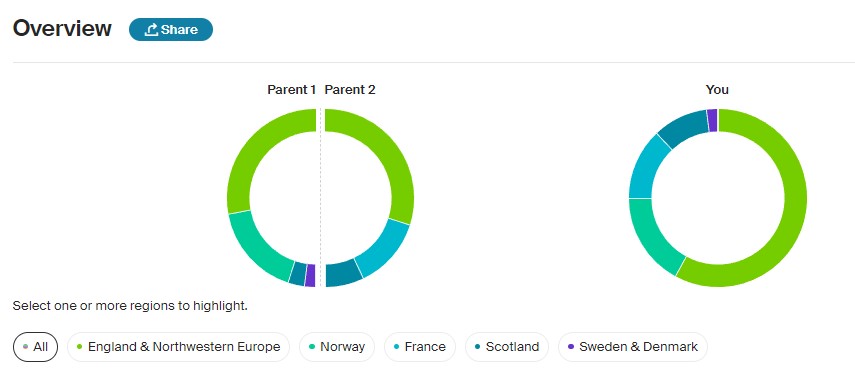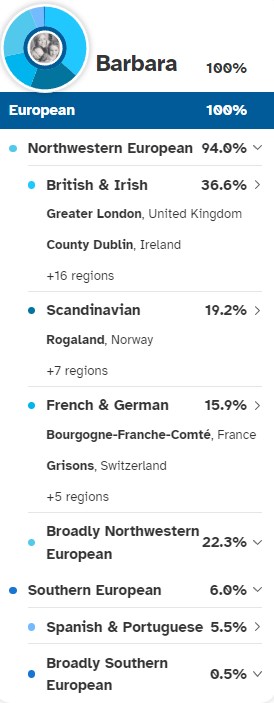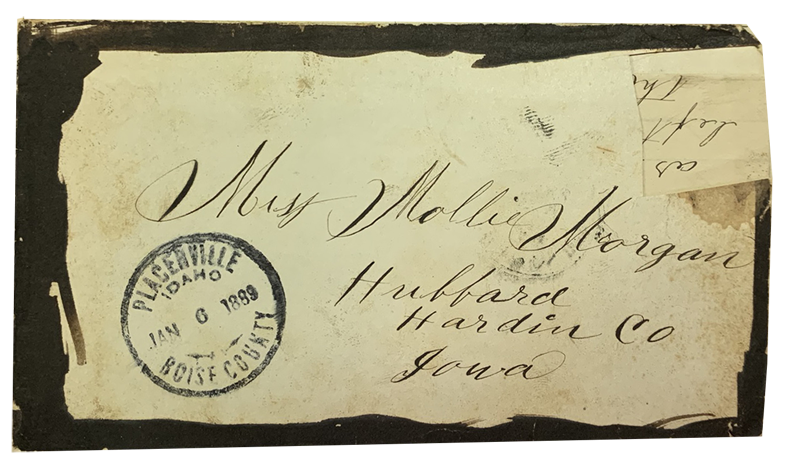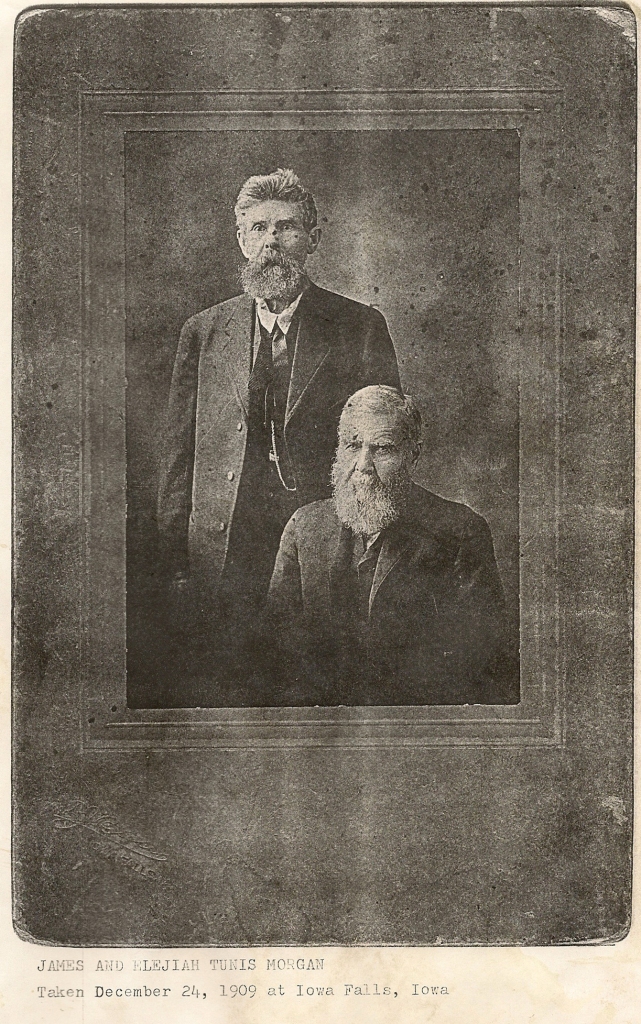I have had four different DNA tests over the last several years: 23 and Me, My Heritage, Ancestry, and Living DNA. Since each testing company has a very different data base, each of my test’s results have been different from the others.
So, let’s begin, shall we?
Two of my siblings have also tested at Ancestry. Once topic that has come up in family discussions is how each of my siblings and I have differing ethnicity results, yet have the same parents.
I explained it this way once to a friend, and I think it still holds up. Our two parents’ DNA that is passed on to each child is a bit like a big ol’ ladle of beef stew. One scoop might have more carrots and fewer potatoes. The next scoop will have more beef than the first. It’s all the same stew, but my bowl isn’t exactly like any of my siblings.
Here’s a screen shot of my DNA results at Ancestry compared with two of my siblings.

You can see that I and sibling #1 have considerable more English DNA that sibling #2. Sibling #1 has more Norwegian that either I or #2. Sibling #2 has significantly more Scottish and Swedish/Danish than either I or #1. I have more French that either. And, yet, we all all full siblings.
A new feature at Ancestry is the ability to see which ethnicities come from which parent, as in the graphic below. Parent 1 is my mother; 2 is my father.

I can tell that Parent 1 is my mother, because she has the Norwegian DNA and my father has the French.
My test at My Heritage had quite different results, as seen in the graphic below.

The percentage of English DNA is fairly close, as is the Iberian (Which I am going to assume includes France.). However, this is where things change up a bit. Rather than Norwegian, My Heritage has Finnish DNA. So far in my research, I have found no Finnish relatives.
The East European and Ashkenazi Jew percentages really throw me. As far as I know, no other sibling or relative has Jewish DNA. What makes me think that this might be accurate is that My Heritage is an Israeli company, specializing in Jewish and Eastern European ancestry. The 3% equates to having a fully Jewish ancestor about five generations back. I have yet to find this person.
Now, at 23 and Me, things are even stranger…

Spanish and Portuguese? Perhaps from my French ancestors, as France neighbors Spain. At least the Norwegian reflects my paper records more accurately.
At Living DNA, which specializes in British ancestry, my results are different as well.

I an understand the Scandinavian, as it’s not too far off from Ancestry and 23 and Me, but, the 72.4% French…
My grandmother was 100% French Canadian, which would account for up to about 25% French DNA in me, at the most. So, where does the other 50% come from?
My only thought is that the French and English traded kings, queens, and DNA for centuries. Since this company specializes in British heritage, perhaps they have been able to better specify which “English” DNA is actually French.
So, I find this interesting, but what does it prove, if anything?
I think the real value in DNA is found in discovering relatives and connections. It can prove a relationship where the paper trail might not be sufficient. It can give clues as to where to look to find an answer to an unknown relationship. And, it can disprove family lore, as in my case with our supposed Native heritage through my grandmother Keene.
I also think it can be just interesting and enriching; it’s a way to connect yourself with all the thousands of ancestors who make up each of us. It helps us to realize that we didn’t just appear in space and time from nowhere. Rather we are the result of little decisions in a chain thousands of years long.
“Til next time.



